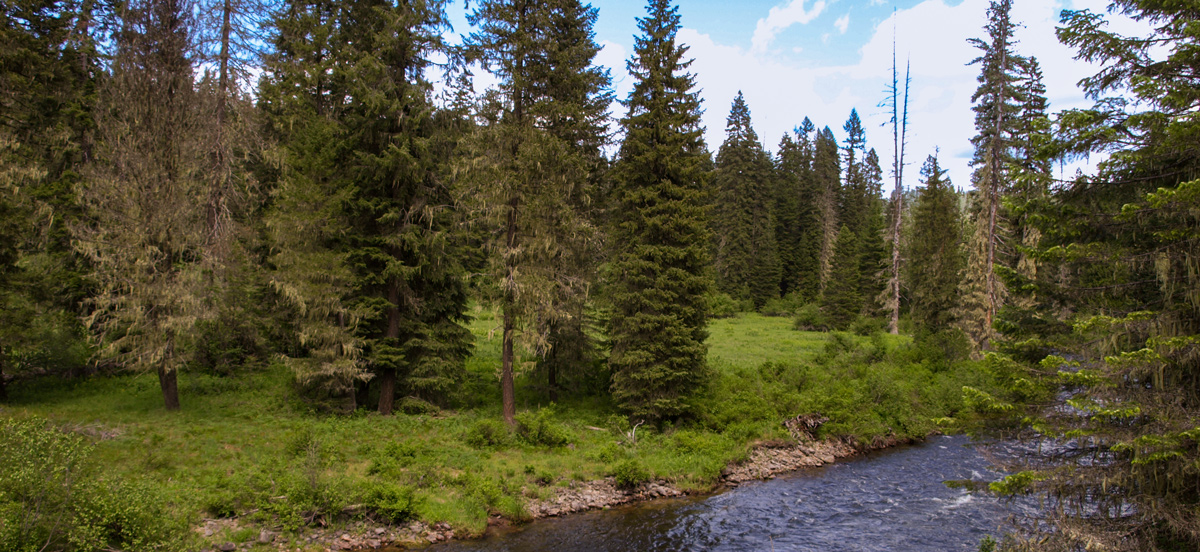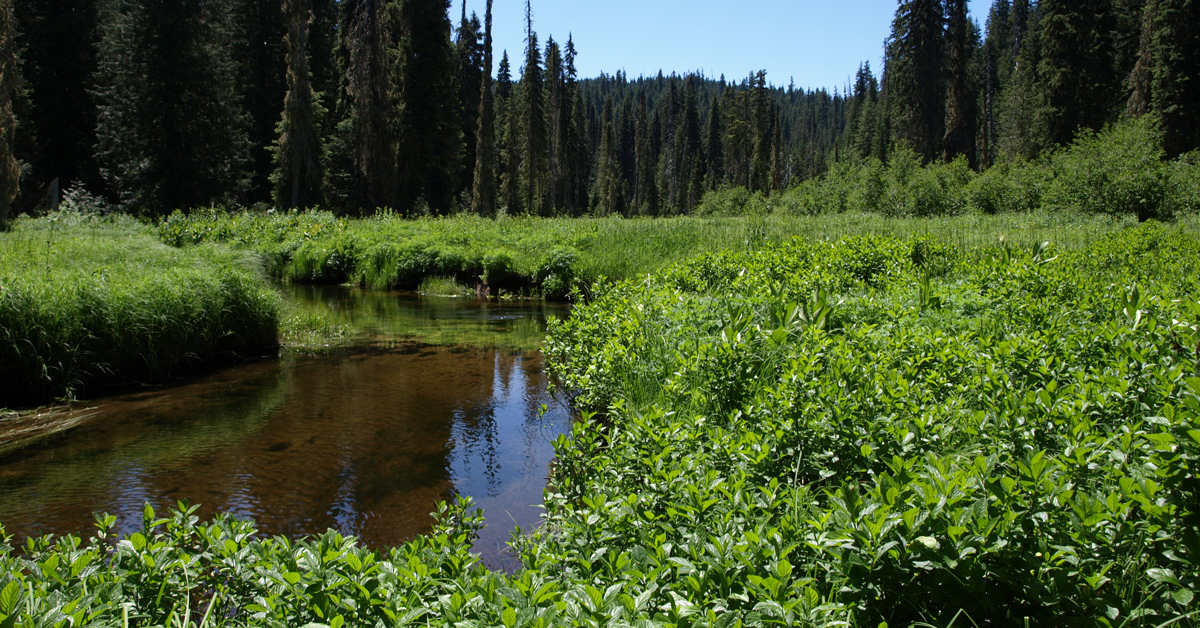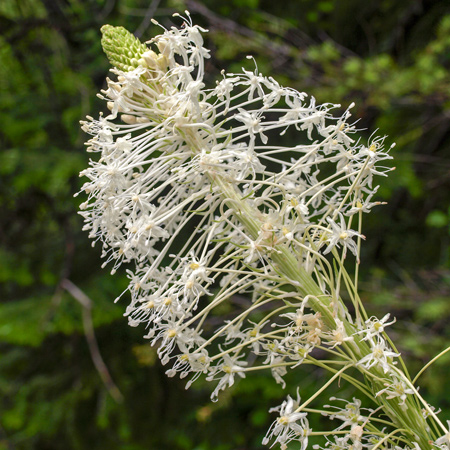After a few hours gathering horses, the expedition manages to leave the Weippe Prairie at 10 am. During lunch at last year’s Pheasant Camp, they meet two advance hunters. The whole group continues to the Small Prairie on a slippery trail cluttered with fallen trees. Lewis prepares a specimen of beargrass (Xerophyllum tenax).
On the Road Again
by Yellowstone Public Radio[1]Originally aired weekdays by Yellowstone Public Radio during the Bicentennial observance of 2003-2006. Narrated by Hal Hansen. Scripts by Whit Hansen and Ed Jacobson. Produced by Leni Holliman. © … Continue reading
Leaving Weippe Prairie
it rained very hard in the morning and after collecting our horses we waited 〈an hour〉 for it to abait, but as it had every appearance of a settled rain we set out at 10 A. M. we passed a little prarie [Crane Meadow] at the distance of 8½ me. to which we had previously sent R. Feilds [Reubin Field] and Willard. we found two deer which they had killed and hung up.
—Meriwether Lewis
Lunch at Pheasant Camp
Pheasant Camp
© 7 June 2009 by Kristopher K. Townsend. Permission to use granted under the Creative Commons Attribution-Share Alike 4.0 International license.
at the distance of 2½ miles further we arrived at Collins’s [Lolo] Creek where we found our hunters; they had killed another deer, and had seen two large bear together the one black and the other white. we halted at the creek, dined and graized our horses.
—Meriwether Lewis
Moving to Small Prairie Camp
Small Prairie Camp
© 29 June 2009 by Kristopher K. Townsend. Permission to use granted under the Creative Commons Attribution-Share Alike 4.0 International license.
we proceeded on passing the Creek three times and passing over Some ruged hills or Spurs of the rocky Mountain, passing the Creek on which I encamped on the 17th Septr. last to a Small glade of about 10 acres thickly Covered with grass and quawmash, near a large Creek and encamped.
—William Clark
Fallen Timber and Slippery Roads
the fallen timber in addition to the slippry roads made our march slow and extreemly laborious on our horses. the country is exceedingly thickly timbered with long leafed pine, some pitch pine, larch, white pine, white cedar or arborvita of large size, and a variety of firs.
—Meriwether Lewis
Beargrass Bloom
Xerophyllum tenax
Fish Creek below Hungery Creek, 6 June 2009. © by Kristopher K. Townsend. Permission to use granted under the Creative Commons Attribution-Share Alike 4.0 International license.
Beargrass Specimen
The leaves are made use of by the natives, to make baskets & other ornaments. On high land, Rocky mountains Jun. 15th 1806.
—Meriwether Lewis[2]Xerophyllum tenax. Moulton, ed. Herbarium, specimen 175.
Weather Diary
State of the weather at rise
Wind at rise
State of the weather at 4 P.M. Wind at 4 P.M. cloudy N W rain after fair & rain N W it began to rain at 7 A.M. and continued by showers untill 5 P.M. [Clark: we Set out on the rocky mountains.]
—Meriwether Lewis and William Clark[3]To assist the reader of this web page, the date column is omitted and some abbreviations have been spelled out.
Weippe Prairie is a High Potential Historic Site along the Lewis and Clark National Historic Trail managed by the U.S. National Park Service. A 274-acre tract in the prairie is managed by the Nez Perce National Historic Park.
Notes
| ↑1 | Originally aired weekdays by Yellowstone Public Radio during the Bicentennial observance of 2003-2006. Narrated by Hal Hansen. Scripts by Whit Hansen and Ed Jacobson. Produced by Leni Holliman. © 2003 by Yellowstone Public Radio. |
|---|---|
| ↑2 | Xerophyllum tenax. Moulton, ed. Herbarium, specimen 175. |
| ↑3 | To assist the reader of this web page, the date column is omitted and some abbreviations have been spelled out. |





